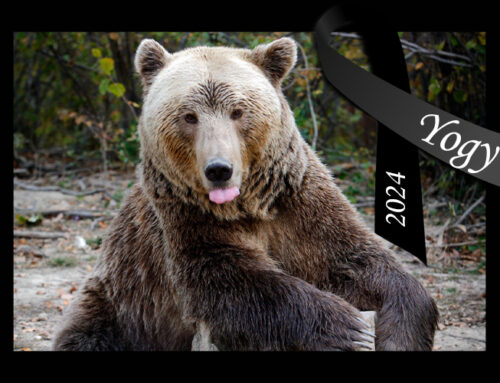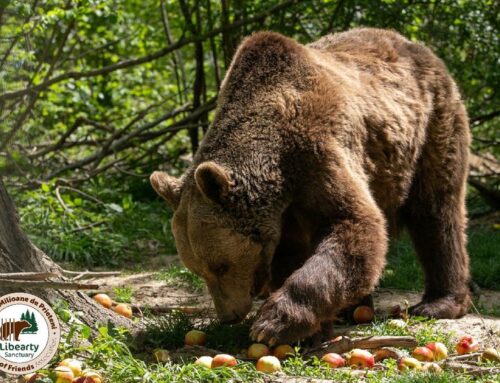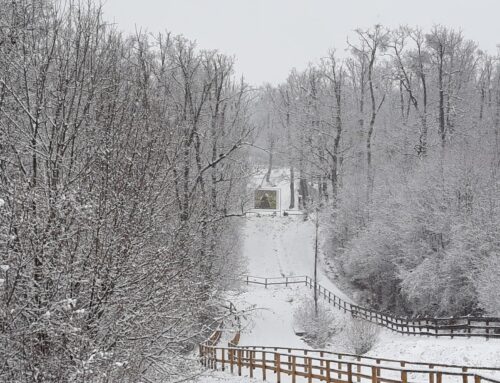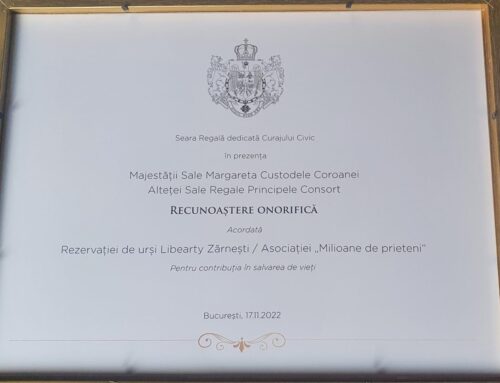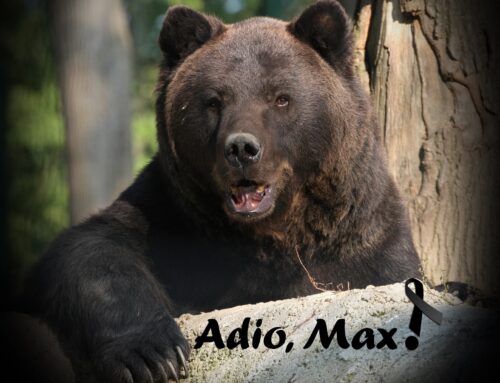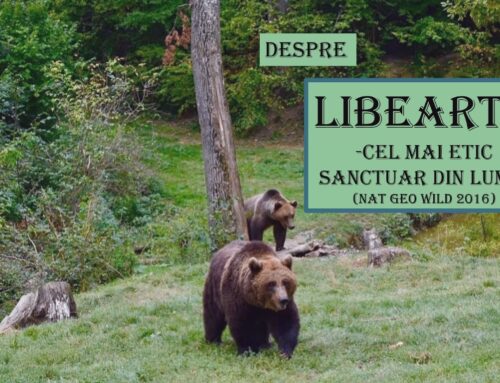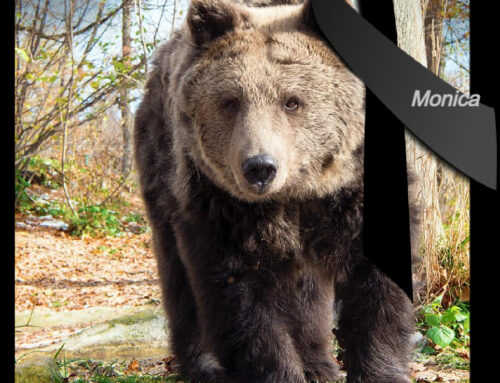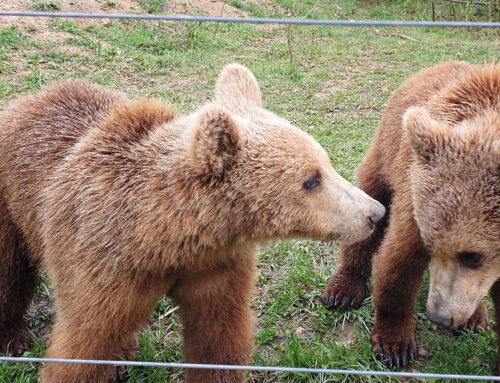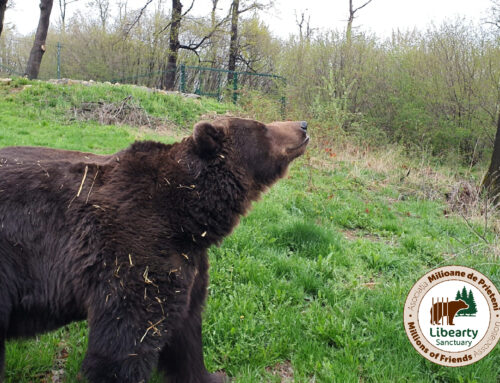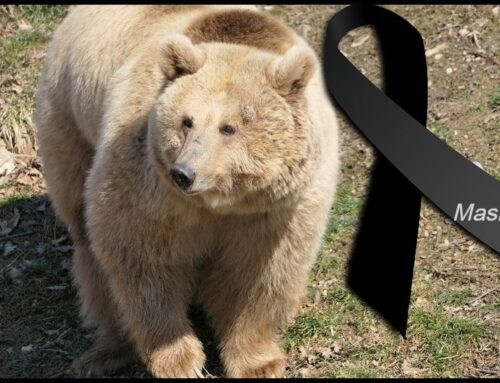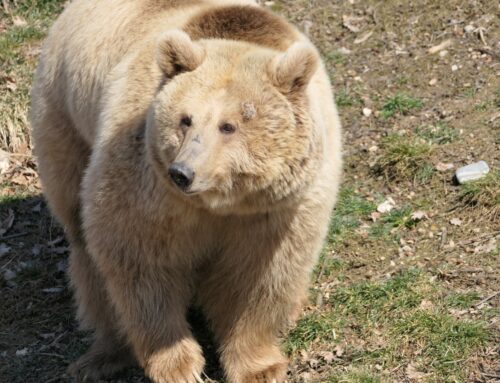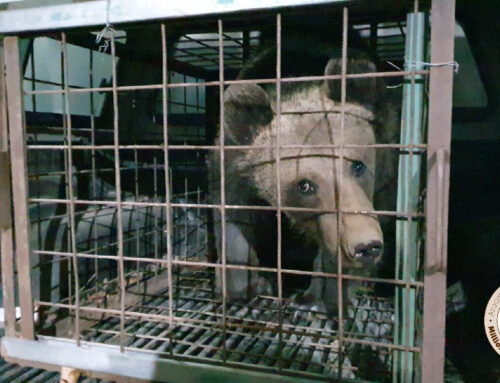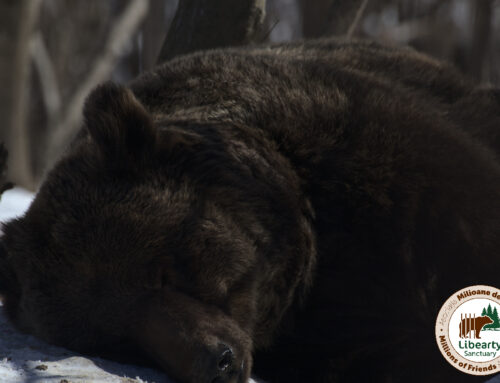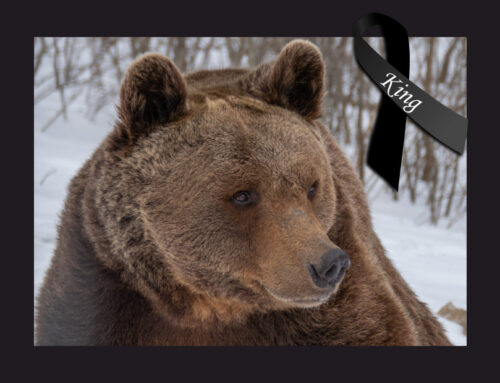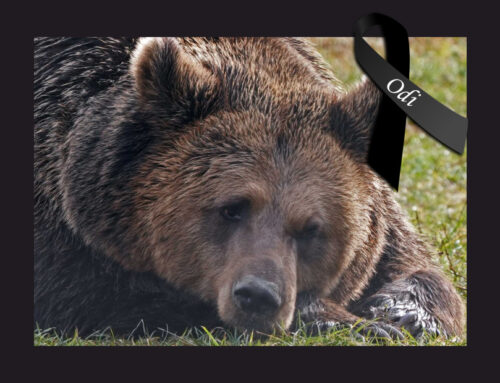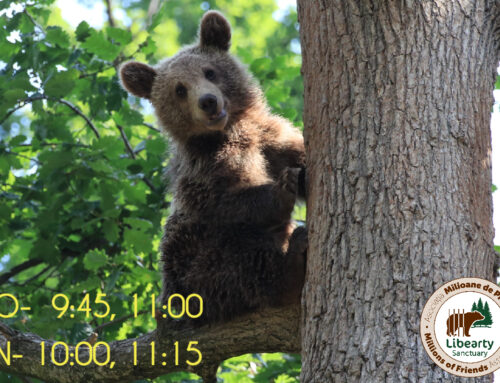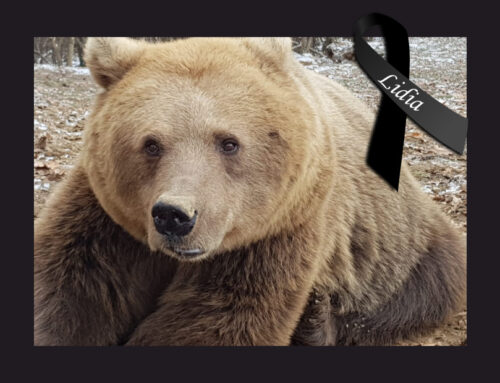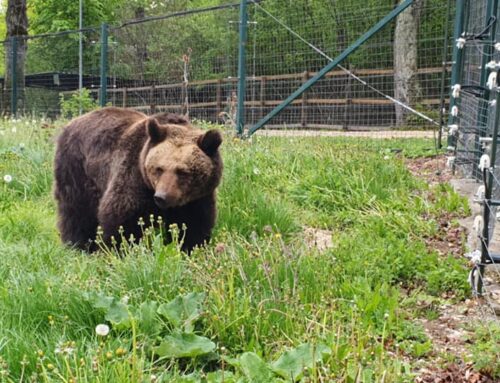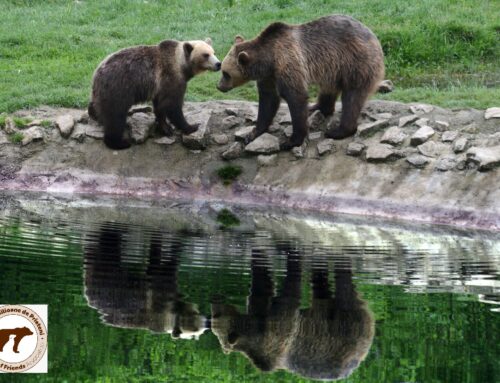

As autumn approaches, the rescue season is underway. The changing leaves at the Libearty Bear Sanctuary welcome two poor bears who were rescued from their rusty cages at the closed zoo of Onesti, a small town in central Romania. The last bears remaining there, Boris and Kodiak had paid their dues living in filthy conditions as zoo attractions for many years. Their waiting came to an end early one morning in August, when I drove the winding roads of the Carpathian mountains to Onesti, followed by the sanctuary’s rescue van.
We passed a rusty fence with a sign for the zoo and were welcomed by an emu bird that was walking free between the old cages like an official making an inspection. The small zoo lies near the river that curves around the town, and the two bears were pacing nervously in cramped cages right at the entrance. They hungry because they hadn’t had their dinner for a few days—a standard procedure to make sure they don’t get sick in transit. They circled round and round near the iron bars, watching the transportation cage being brought down a small ramp from the Libearty van. A quick visual inspection b our vet determined that the bears were healthy but showed the usual signs of a long life in a zoo jail. Their long, powerful claws had disappeared, worn away from pacing the rough surface of their concrete cells, and their broken teeth had succumbed to years of chewing the bars in frustration.
Their story resembles those of most of the 40 other bears that were brought to Libearty and spared from lives of misery in old Romanian zoos. Eleven years ago, Kodiak and Boris were moved from the Radauti Zoo in northern Romania to Onesti to attract children to the zoo there. The staff at Onesti said that they may be seventeen years old, but no one knew for sure.
We decided to rescue Kodiak first, so we set up the transportation cage at the entrance to his den. A chunk of meat was put in the cage as bait, but this wise boy wouldn’t be fooled. He stretched his body and his front paws to collect the reward, but kept his back paws outside the cage like a getaway car in front of a bank, ready to pull back at a moment’s notice. Despite warm words of encouragement from the zoo manager and even some honey we poured from a jar onto the floor of the cage, Kodiak just stuffed his mouth with food and escaped from the trap. It had been over two hours since we’d started, but we couldn’t convince him to get into the transport cage. Change of plans: we closed Kodiak in his den and moved the transportation cage to the front entrance of Boris’s enclosure. In less than 10 minutes, the hungry bear climbed into the cage to get the tasty food. The cage door slammed shut behind him. Boris struggled to get out, peddling on the floor like he was on an imaginary bicycle, but he calmed down when we gave him more food.
With one down and one to go, we moved the transport cage to Kodiak’s enclosure again. We opened the den, but he was too nervous to come out. We waited another two hours, hoping he’d get up the courage to approach the food, but he didn’t budge. Meanwhile, the hot August sun was beating down on Kodiak, so we decided to give him a cooling shower with a garden hose. But it was getting late, and we needed to start the drive back to the sanctuary soon. Our vet finally made the difficult decision to shoot a tranquilizing dart at Kodiak. The bear would have to be carried asleep in the transportation cage. Kodiak woke up in the van on the journey to his new life—the life of a free bear at Libearty, where green grass, tall trees, and huge fresh water pools awaited him, along with a friendly bunch of other rescued bears.



